



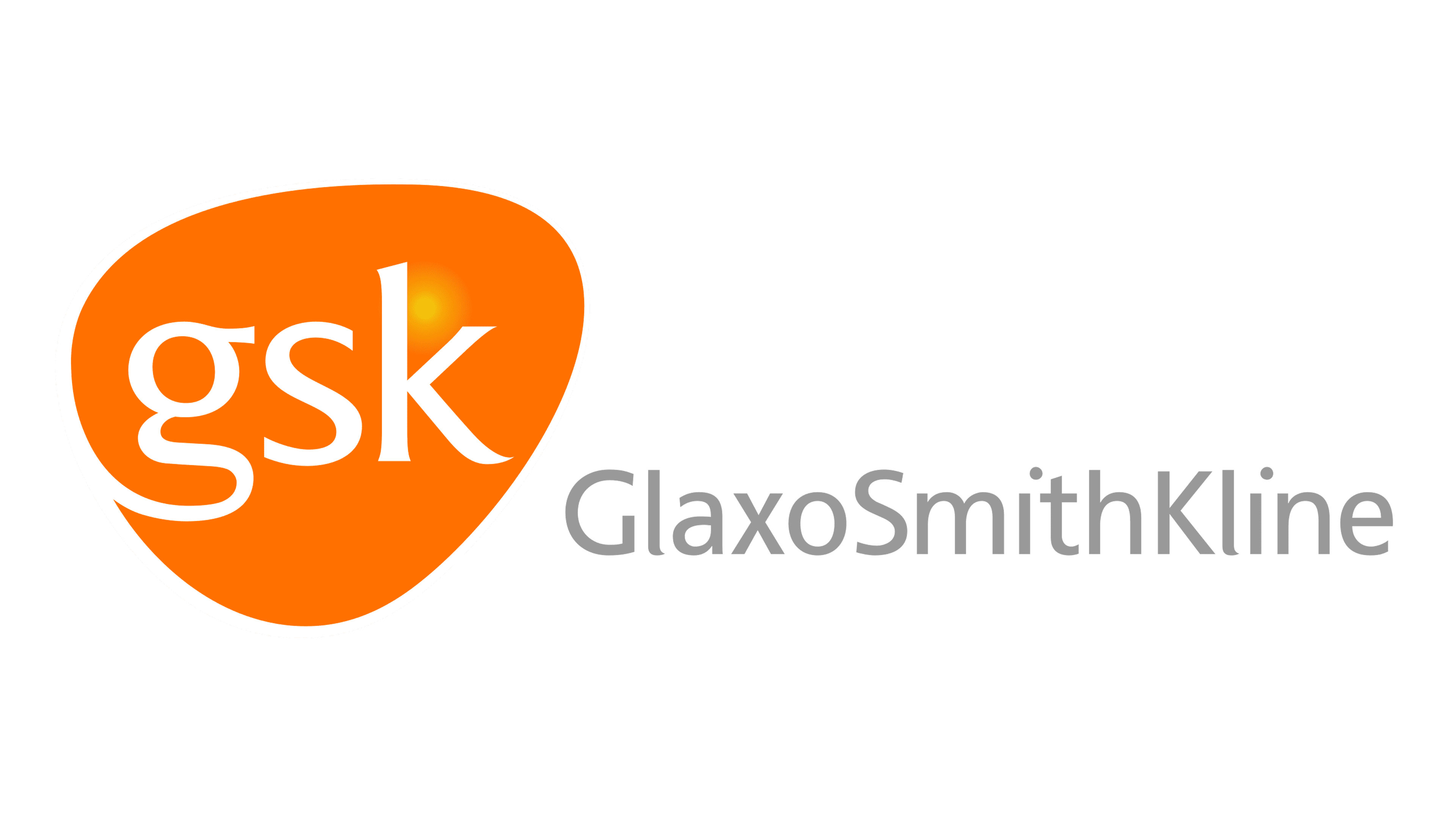








Chemical registration system for the future
Are you ready to stop maintaining a custom built registration system? Do you need software you can rely on to standardize all input, fix or report errors and keep your chemical database in order?
We have a solution for you.
Compound Registration compares the uniqueness of new small molecules against those already stored in your database. It comes with a fully functional, preset registration workflow you can customize in detail to fit your business logic.
You can automatically take compounds through normalization and quality check before registration, or intervene in case any criteria is violated. Compound Registration fixes most issues, moving exceptions to a staging area to handle manually.
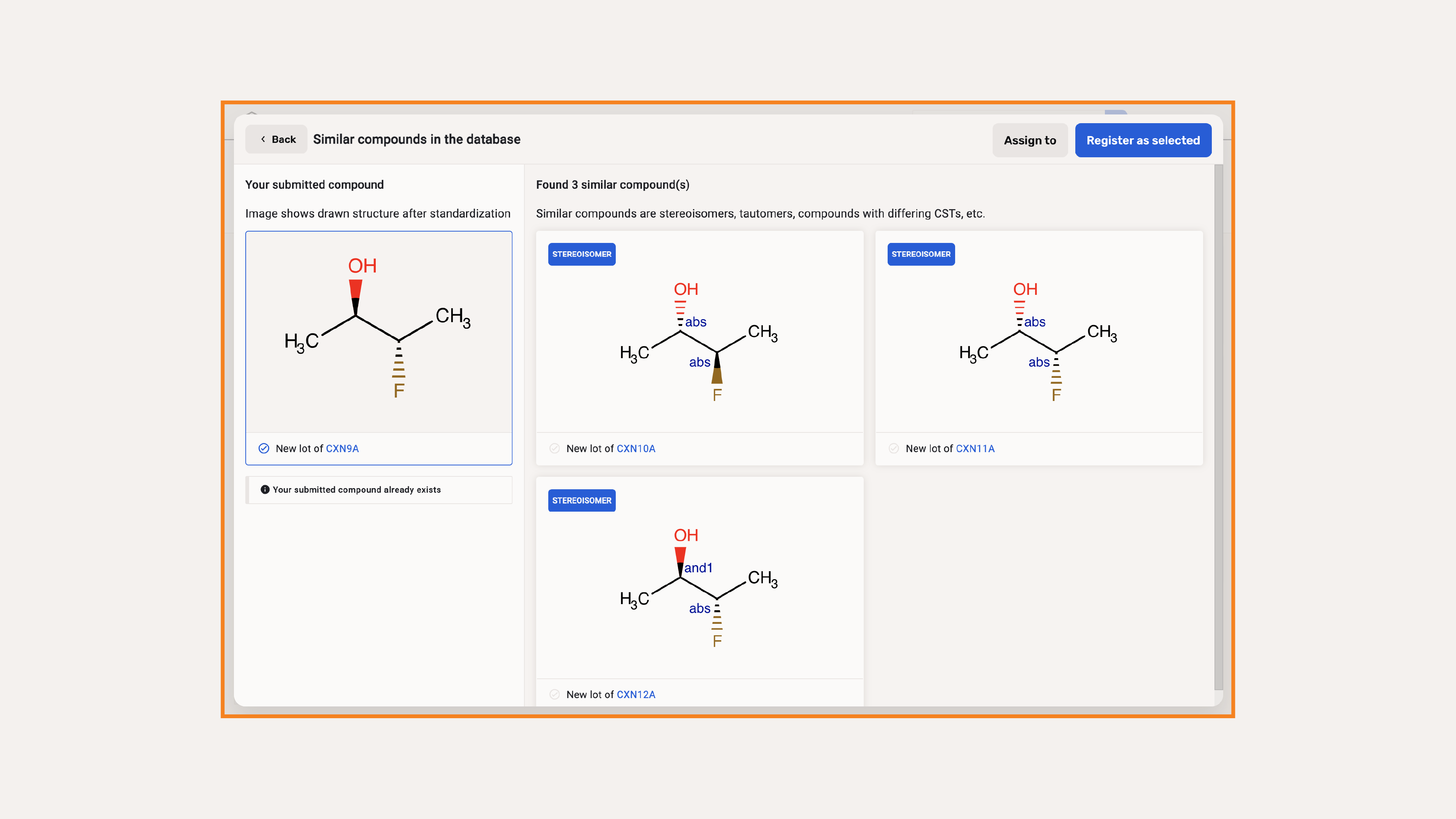
Features
Register compounds individually or in bulk
Add new compounds one-by-one through the web-based registration form or in bulk via the upload page. The system handles single and multi-component structures (two or more independently registered components) with all the validated custom data fields. It supports alternates, mixtures, formulations and polymers.
You can access the registration system from other applications. The publicly available web service API makes integration (typically with an ELN) straightforward, but the service is also accessible via KNIME and Pipeline Pilot workflow tools.
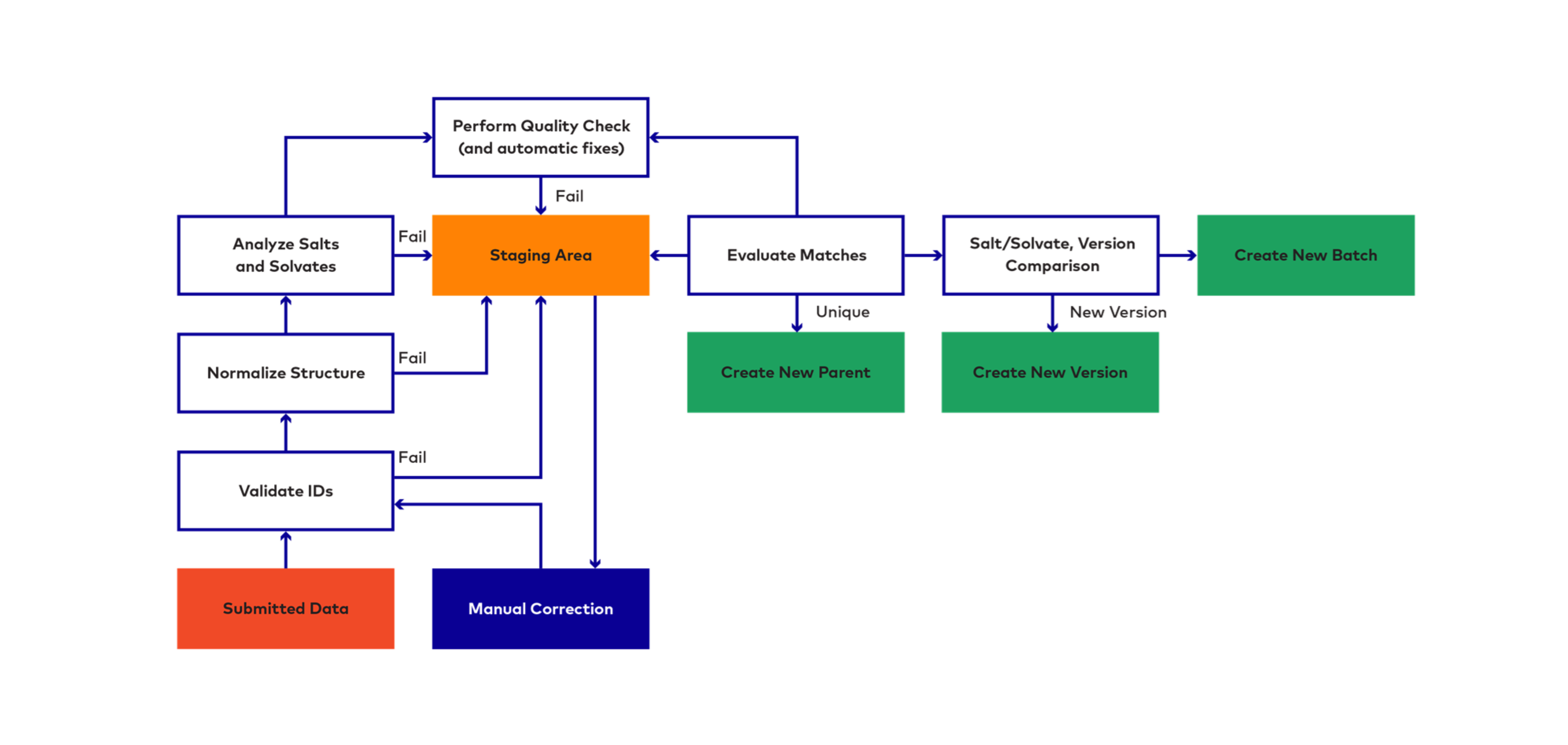
Features
Validate and check unique structures
Compound structures go through a series of standardization, validation and quality checking steps before registration. These include valence error checks and auto-fixes for representation issues.
You can also validate external IDs and other specified data based on your unique business logic. Compounds that don't pass the validation phase or can't be fixed automatically fall into the Staging Area for manual revision.
After validation, the system compares newly submitted chemical structures with the records in the registry. Match types include exact matches, stereoisomers, tautomeric structures and their combinations. If a structure is unknown or only partially known, the system fills gaps with Chemically Significant Text (CST).
.png?width=1668&height=1556&name=reg_final_ws%20(1).png)
Features
Store compounds in a hierarchical structure
The system stores registered compounds in a three-level hierarchical structure of parents, versions and lots (or batches). In this construction, a version may describe an isotopic or salt/solvate variation of a parent, while a lot may represent different production batches of a version.
Salts and solvates are managed in a dedicated dictionary. You can easily specify salts and solvates along with their appropriate multiplicity during the registration, or extract it from the submitted chemical structure.
Read more about parents, versions and lots via the link below
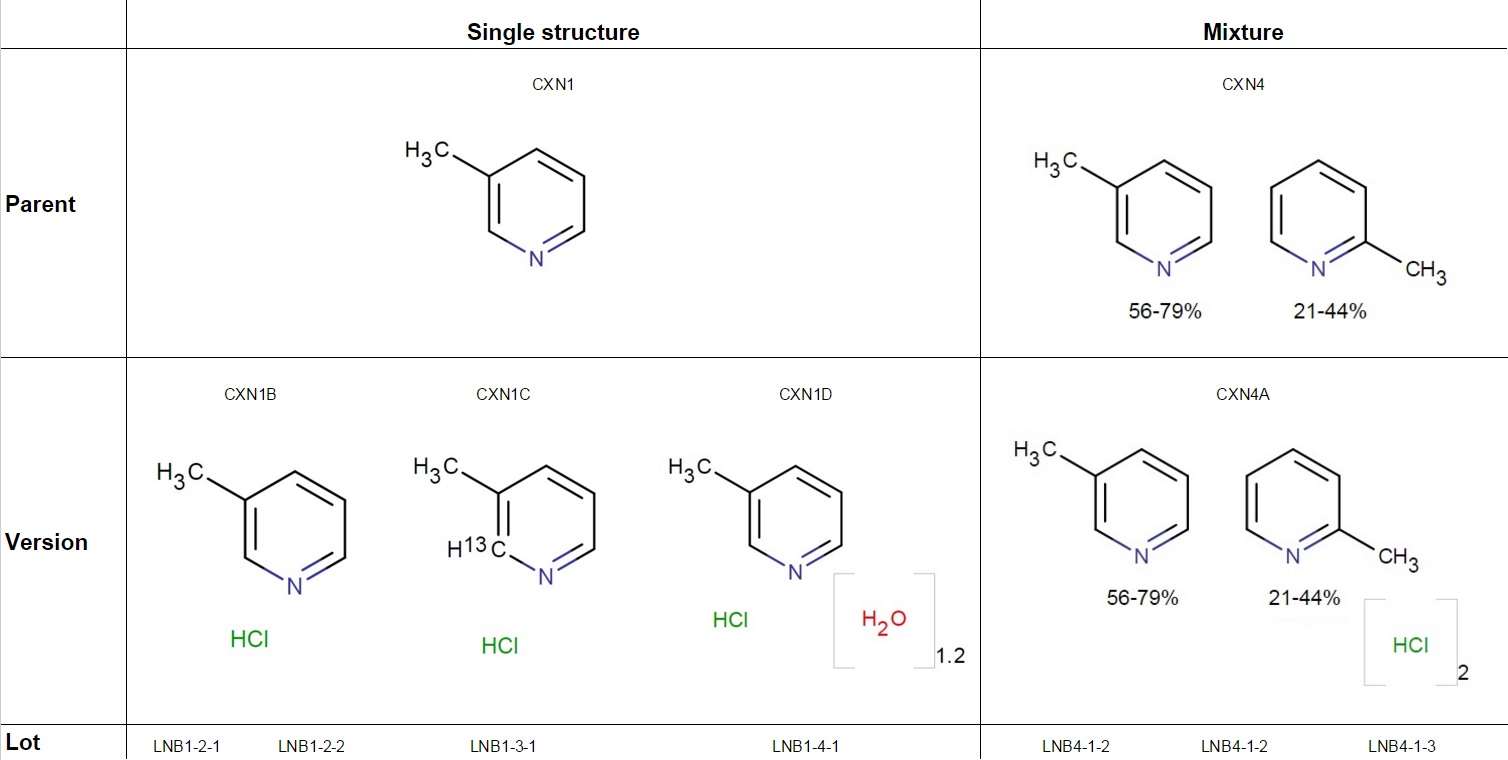
Features
Amend registered entities
Your authorized users can alter the molecular structure or data of a compound in the registry, stored on different hierarchy levels. The amendments you commit to the registry are fully audited. You can also request a complete data history for selected entries.
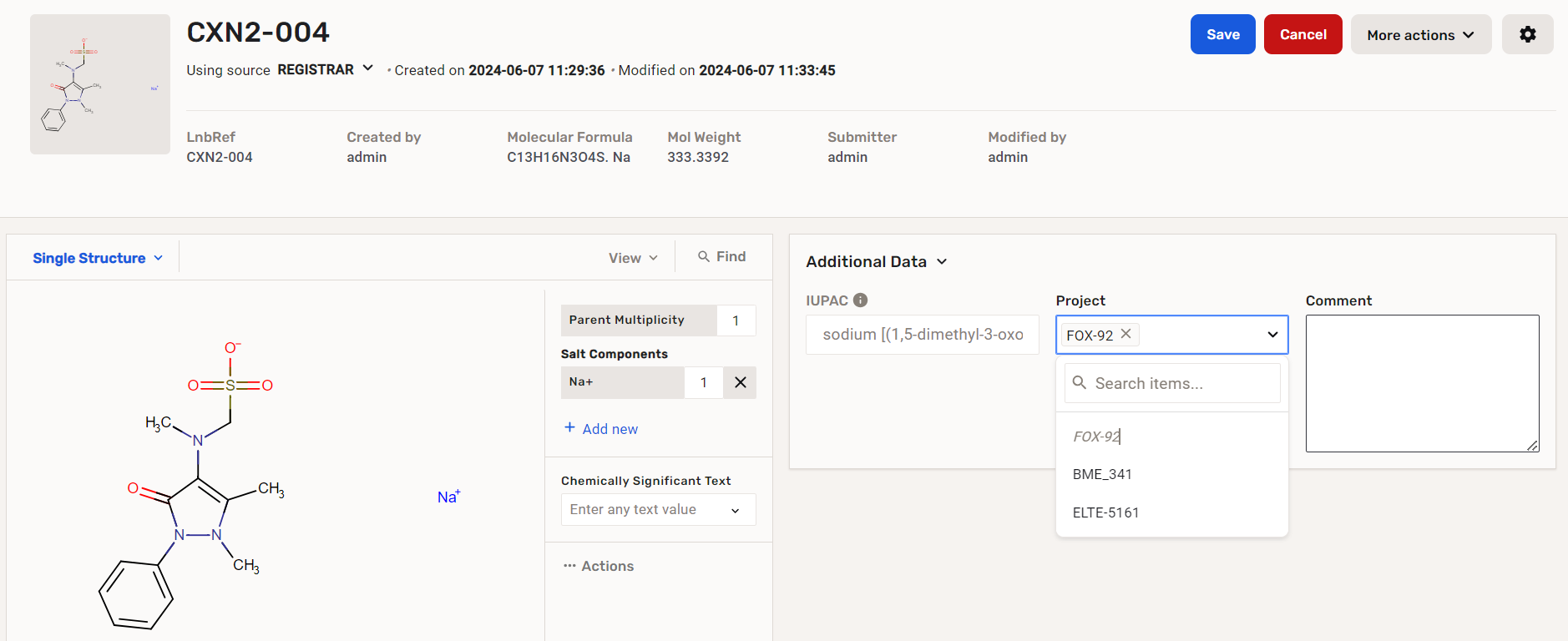
Features
Deploy, configure and integrate with ease
The Compound Registration system can be deployed to a web server as a typical web application. The publicly available REST API enables simple integration into an existing IT environment. The registration database currently supports PostgreSQL or Oracle RDBMS and utilizes JChem tables and additional relational tables for capturing the data.
To enhance the integration capability with downstream databases and processes, Compound Registration offers a publishing engine to mirror its content in flexible formats (downstream RDBMS, xml, sdf).
You can configure large parts of the internal business logic to facilitate easy adoption and comply with your corporate business rules. The system offers a web interface for all the exposed configuration options. It also provides typical authentication modes, as well as a combination of role-based access control and permission handling based on project memberships.

Compound Registration gives you
Streamlined registration
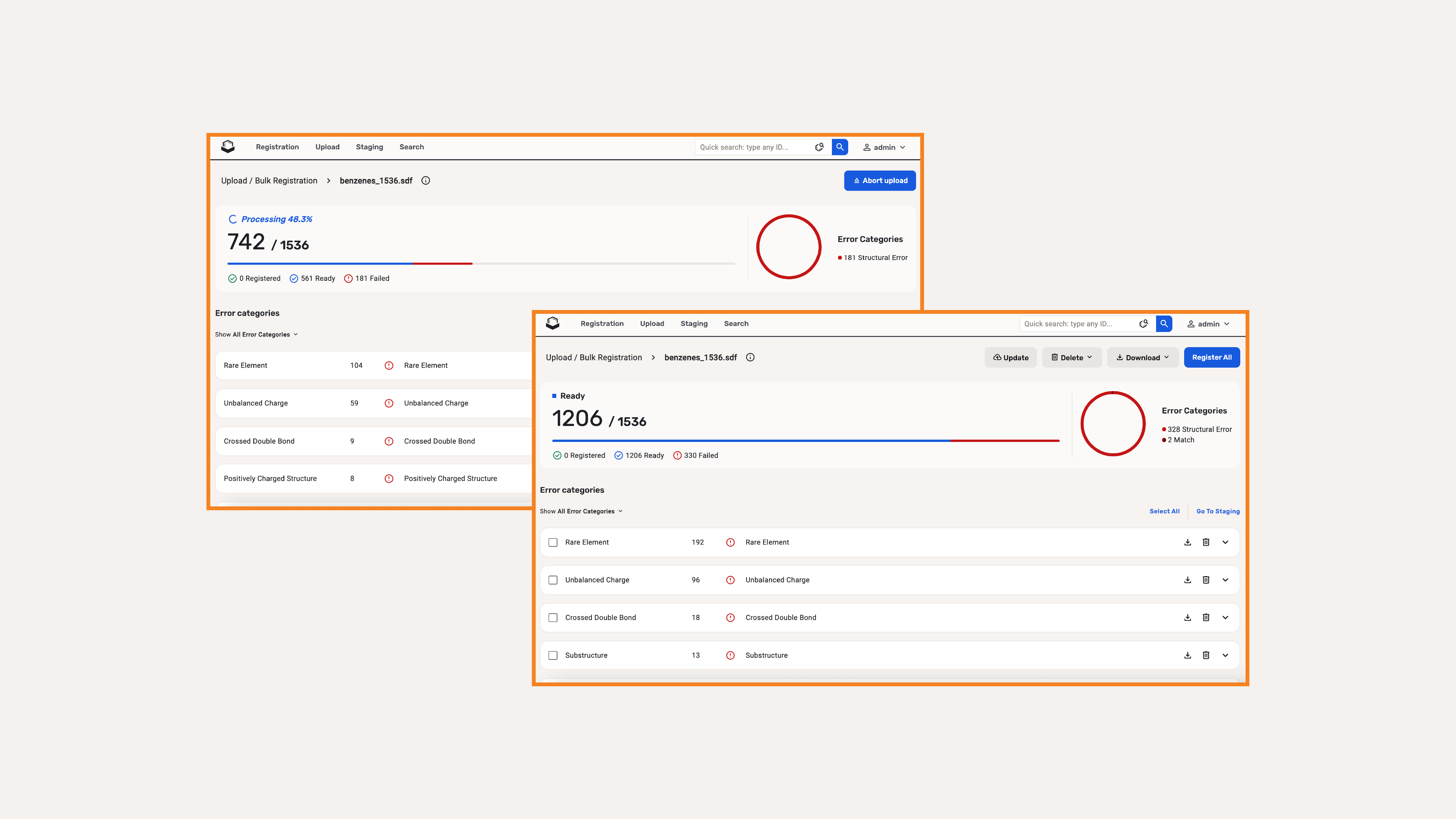
We know that registering each compound takes longer than you like, especially when dealing with large sets, like processing data from your CROs.
Compound Registration gives you stability and performance in your registration workflow, no matter if you submit a single compound or a file with tens of thousands.
Flexible configuration
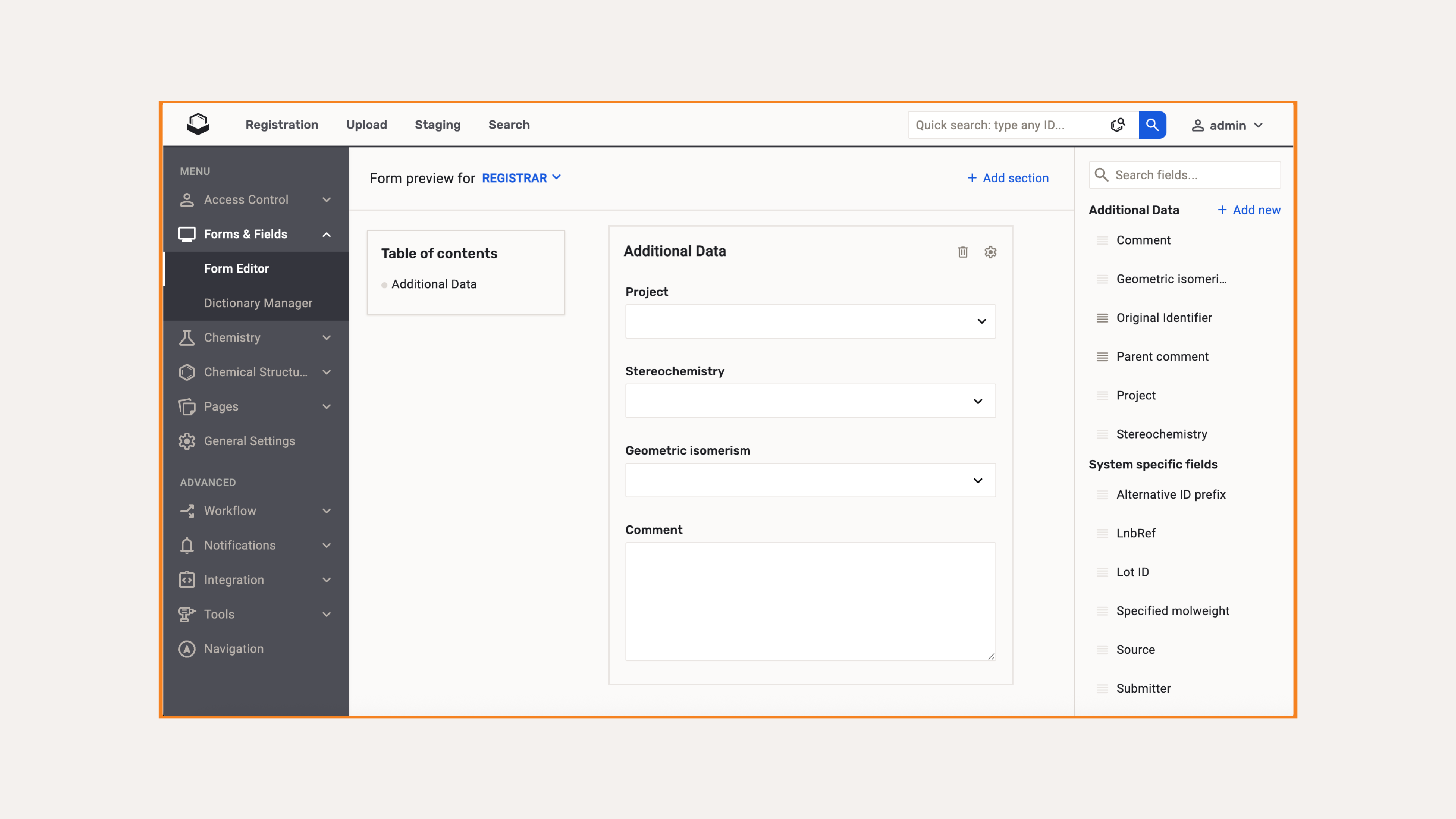
Setting up your registration logic and introducing any change to it takes weeks and months of technical preparation and implementation even with a team of skilled specialists.
Compound Registration comes with a fully functional registration workflow and an administrative UI, where you can customize every part of your flow with a few clicks from ID generation to standardization steps.
Hierarchical data organization
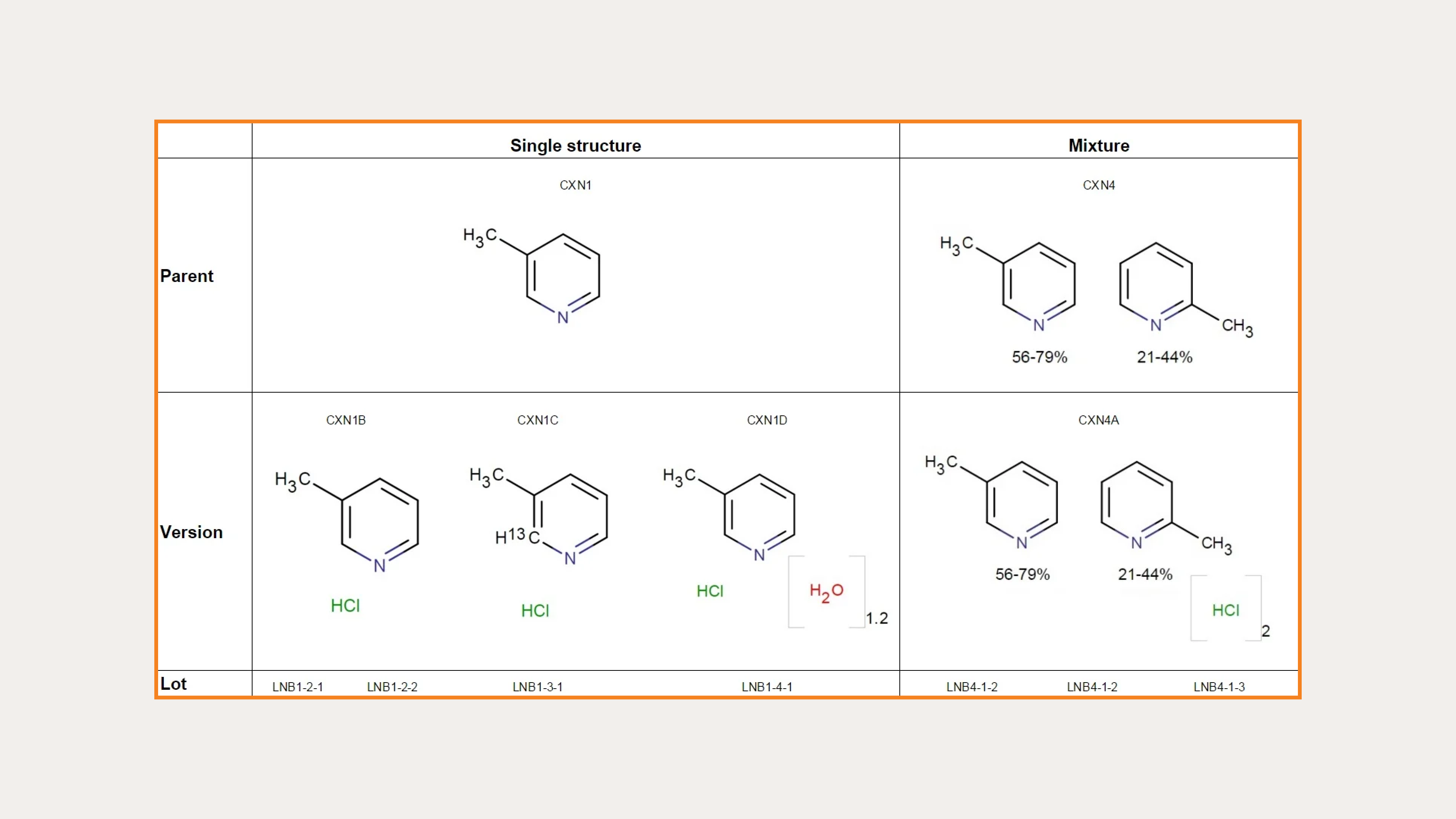
Different salt forms and isotopic versions of the same structure often cause complications in the registration process.
Compound Registration provides a hierarchical organization system for your compounds making sure that all related items are kept together.
Data cleaning and modification
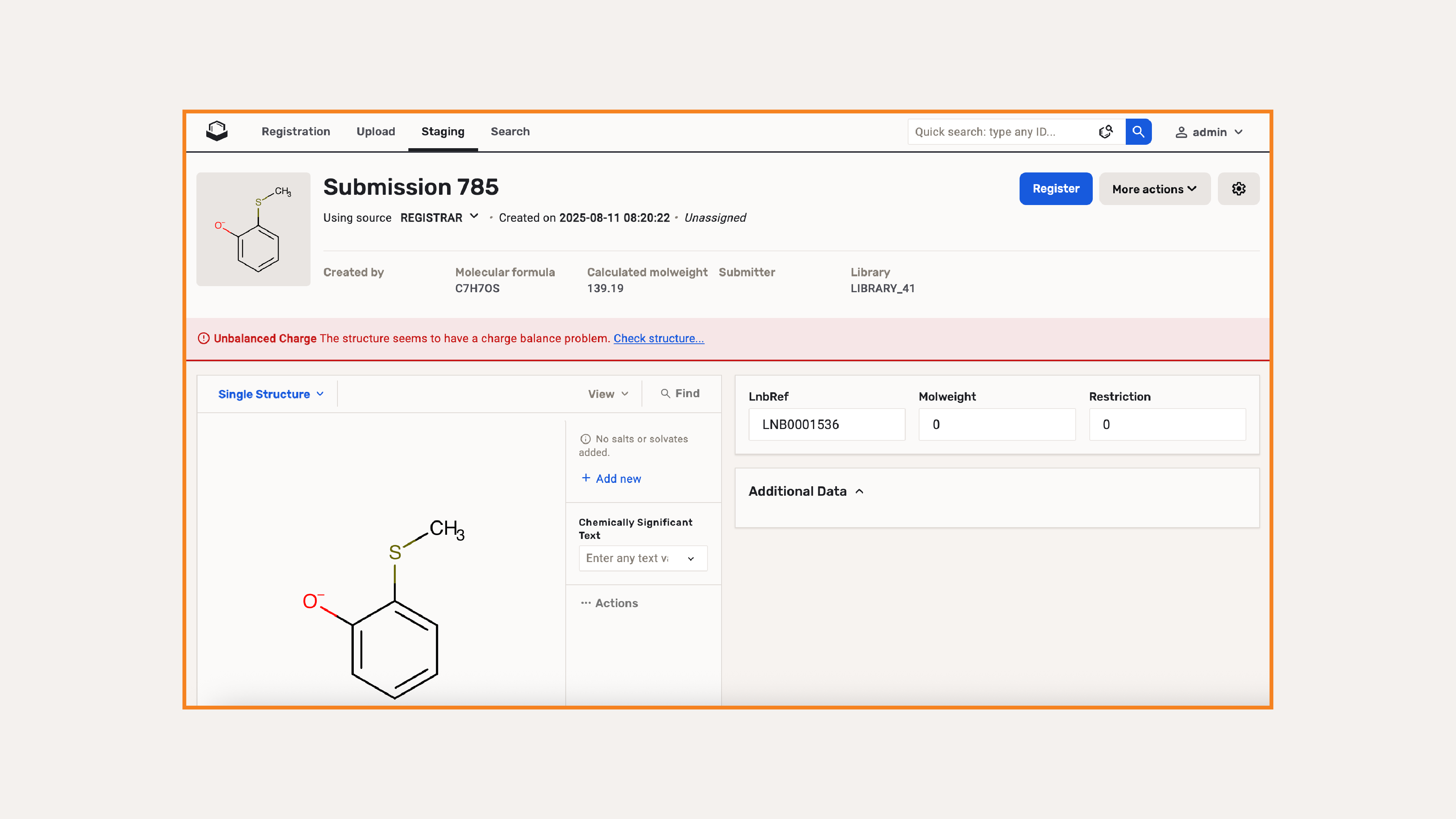
Having to regularly deal with invalid structures and manual data cleanup is a nightmare.
Compound Registration enforces a sophisticated validation and normalization process with supporting tools like a Stereo Analyzer, so you end up with high-quality data throughout your research projects.
Automated data enrichment
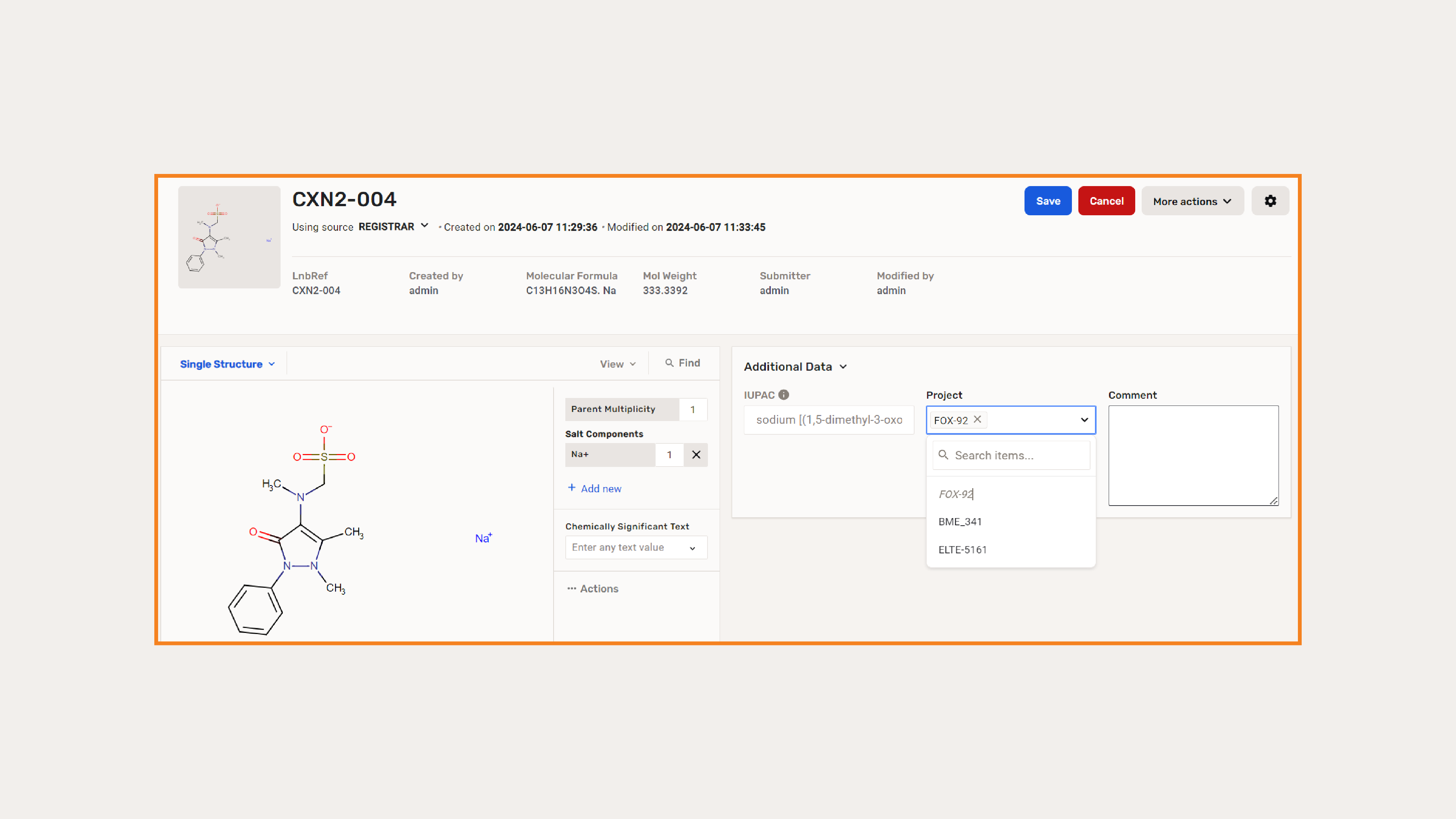
Having to manually generate names and necessary properties for each compound upon every lookup makes research tedious and prone to human error.
Compound Registration provides the option to automatically calculate and store the IUPAC names and a configurable set of properties during the registration process.
Easy integration
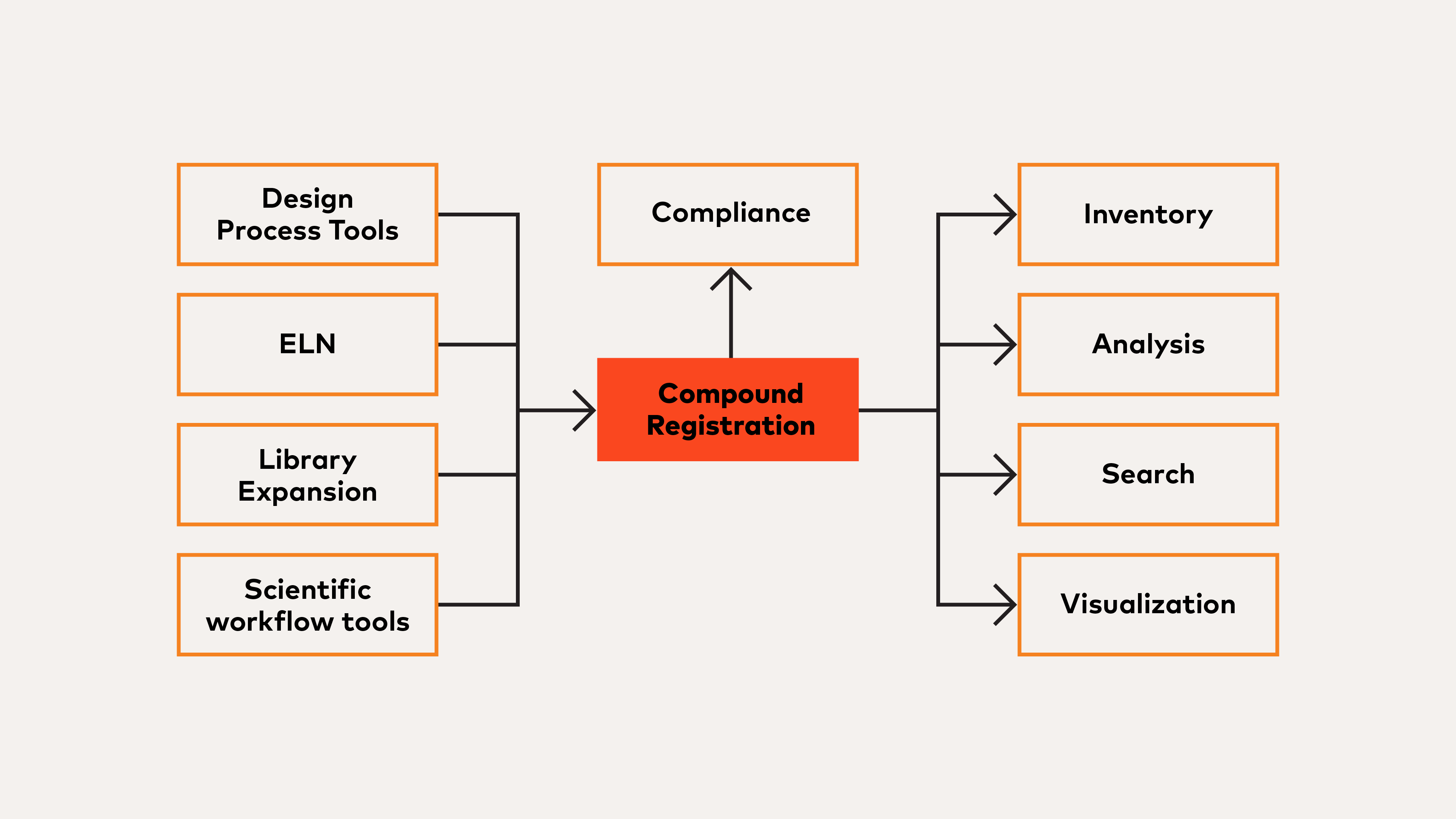
R&D requires using a large number of interconnected applications where integrating your registration system is a never-ending battle.
Compound Registration gives you the flexibility through its API endpoints to connect to all your ELN systems and data analysis applications, delivering reliable, high-quality data throughout your systems.
Want to get Compound Registration for your team?
Compound Registration highlights

Structure validation
Compound Registration allows you to apply strict validation and normalization rules on your chemical structures, then rigorously check for duplications considering stereoisomers, tautomers, isotopes and salt forms.

Stereochemistry and tautomer handling
Compound Registration’s industry-standard stereochemical and tautomer representation along with its sophisticated multi-component handling ensures that even the most complex compounds are registered with ease.

Highly-performant registration
Compound Registration supports a reliable and performant registration workflow even in the case of multi-million databases and when uploading files with tens of thousands of compounds.

Bulk registration
Compound Registration provides flexible structure validation and field mapping even when uploading complete compound libraries. It applies your business rules no matter if your compounds originate from your ELN or are part of a shipment from your CRO.

Compute supplementary data
Compound Registration automatically populates fields with IUPAC names or selected compound properties during your registration process. No more empty data fields when searching in your compound database.

Amend registered entities
Compound Registration supports post-registration modifications in case of error correction or misrepresented compounds. Validation and normalization rules are enforced in case of amendments as well, while the compound IDs are properly re-organized according to the structure changes.
Want to get Compound Registration for your team?
Resources
Learn more about Compound Registration
Related Products
Marvin
The only chemical drawing tool you will ever need
Chemical Naming
Convert chemical names into structures
Chemical Structure Representation
Standardization and correction of chemical structures
Chemicalize
Calculate properties instantly, search chemical data, and draw molecules online
Compound Registration
End-to-end chemical registration out of the box
Reactor
High performance virtual synthesis engine
JChem for Office
Chemical structure handling, data analysis, visualization and reporting capabilities within MS Office
Design Hub
Your molecular design & tracking platform turning drug discovery into a team sport
Compliance Checker
Screening chemistry against controlled substance regulations at the click of a button
cHemTS
Automate HS code assignment for instant, structure based classification
JChem Engines
Search through tens of millions of chemical compounds and receive relevant query hits in seconds.
Calculators and Predictors
Execute high quality physico-chemical calculations and predictions.
Instant JChem
Create, explore and share chemical data
JChem Microservices
Chemical intelligence built to build on
MarvinSketch & Marvin JS
First generation chemical editors MarvinSketch for desktop and Marvin JS for integrations